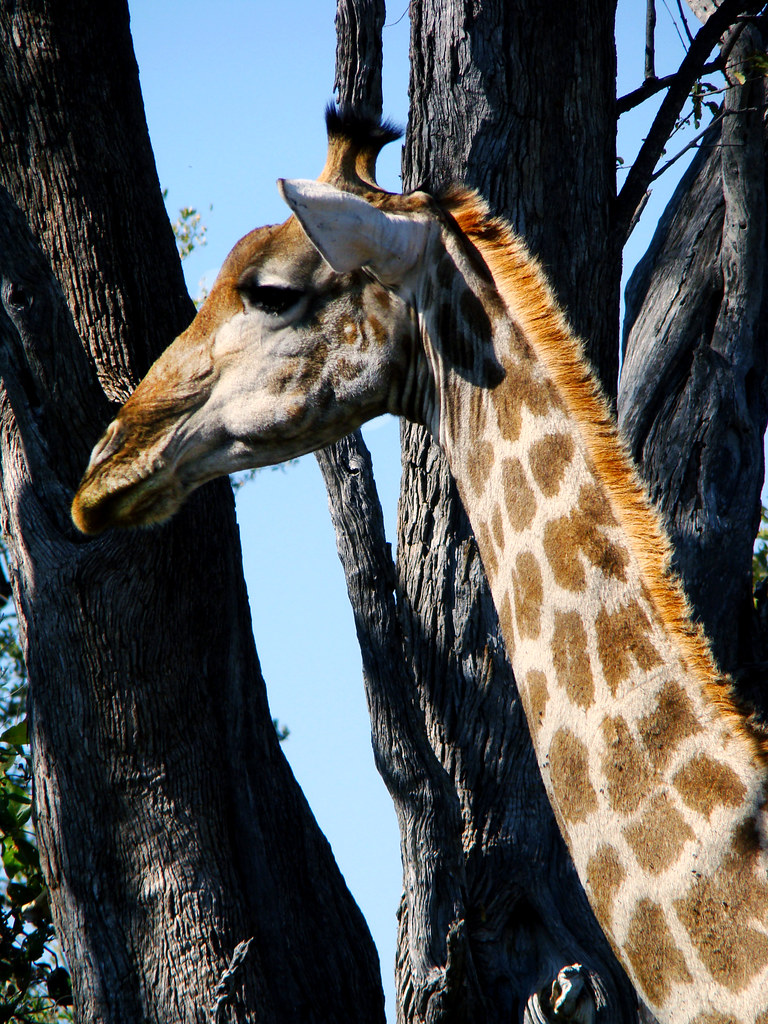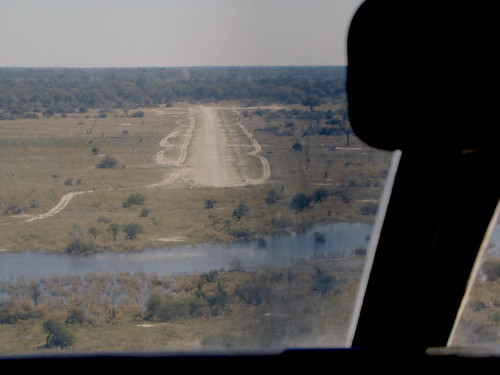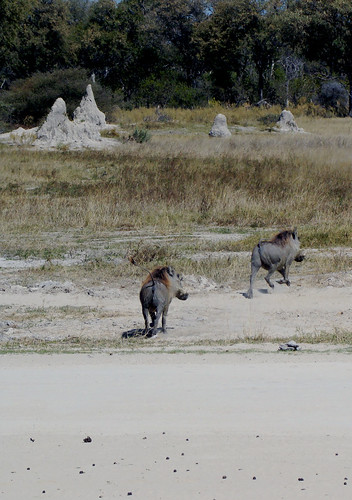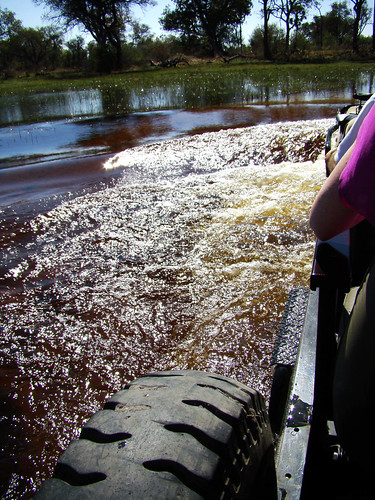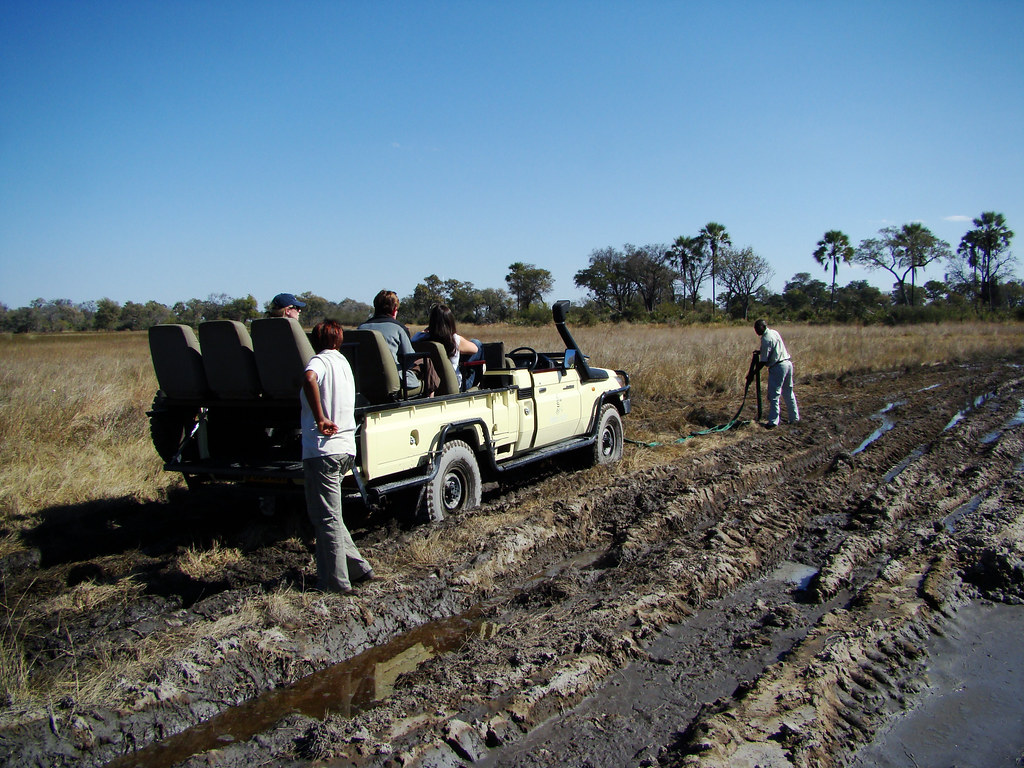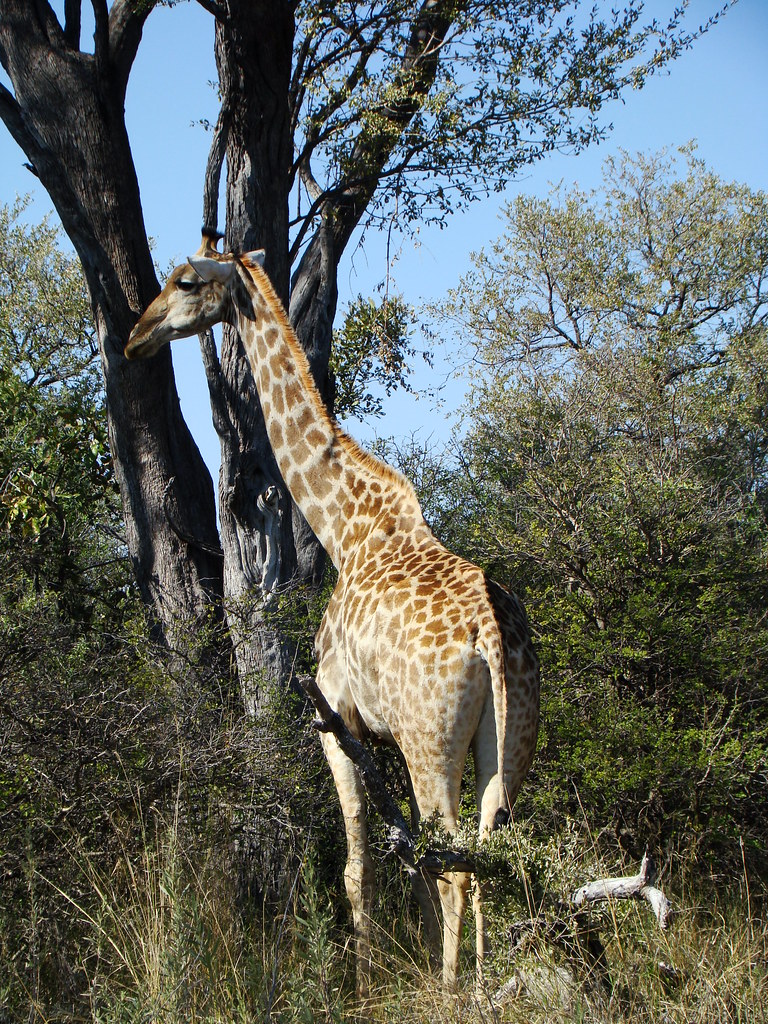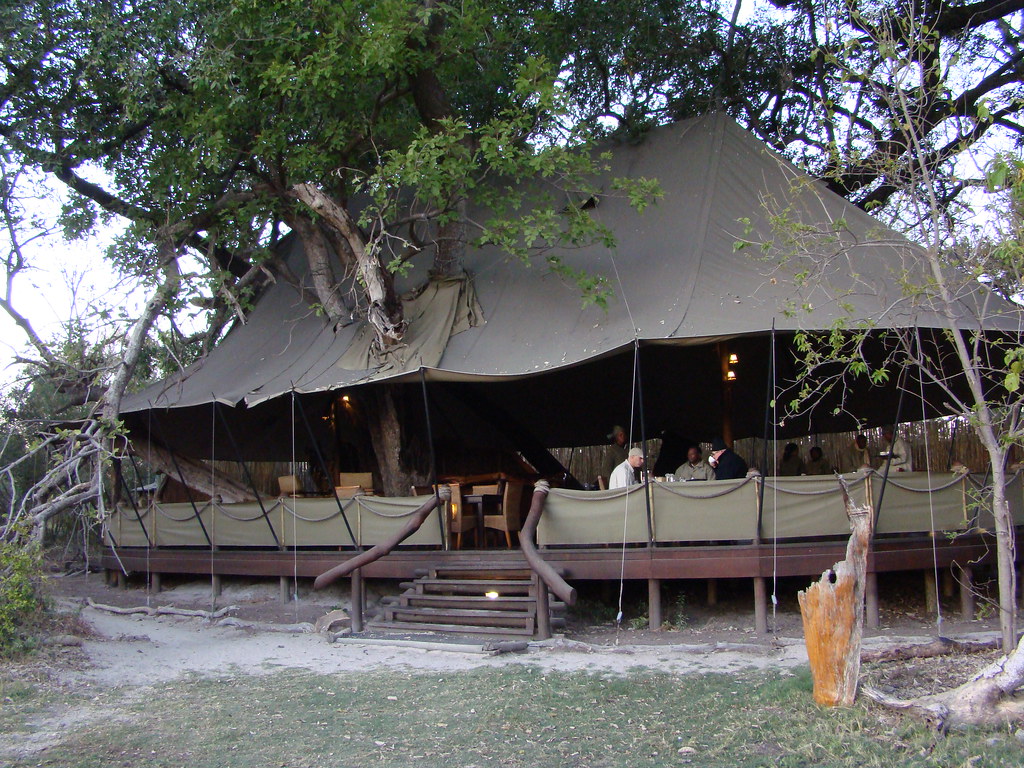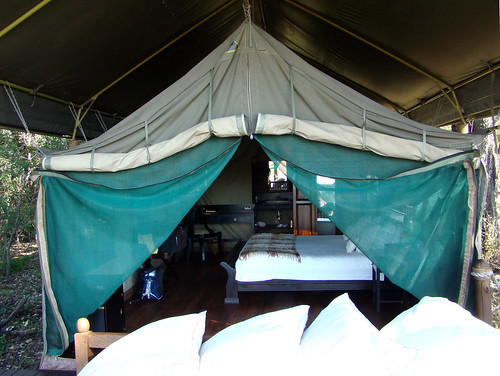Southern Giraffe (Giraffa camelopardalis)
When an airplane seats only eight, everyone has a window. It was the perfect size for our family of four, a mother and daughter, our guide Poniso, and the pilot. We all craned our necks to view the breathtaking terrain below us during our twenty minute flight from Maun, Botswana to the southern tip of Chiefs Island of the Okavango Delta.
We all snapped photos; every frame perfectly composed by nature. The colors were so vivid and the textures so varied, it reminded me of Yann Arthus-Bertrand’s beautiful aerial photographs.The colors were so vivid and the textures so varied, it reminded me of Yann Arthus-Bertrand’s beautiful aerial photographs.

The Okavango Delta is the largest inland delta in the world, formed as gravity guides the water down the gentle slope of the terrain.

As we descended my son exclaimed: “Elephants!” No big surprise that my son was the first to spot wildlife. Then my husband nudged me to take this photo:
After our trip to Galapagos Islands, we decided to go on another wildlife adventure. We hoped to witness other wilderness creatures, up close. Poniso took the wheel of our Jeep-style Toyota Landcruiser. Our first encounter with wildlife was when we helped Poniso shoo away warthogs from the airstrip making way for our airplane's take off for its flight back to Maun.
My son and I sat in the back seat giggling when we caught air, bumping along on the dirt roads. We squealed with delight when the rugged Landcruiser waded effortlessly through the water.
We thought of the Indiana Jones ride at Disneyland and its rough ride. Parts of the terrain even look like Hollywood:
He got out of the car and held up the fruit from the sausage tree (Kigelia Africana). It is eaten by many of the mammals and birds nearby while elephants and an antelope called the Greater Kudu feast on its foliage.
Further along, we stopped to enjoy the antics of a troop of Chacma baboons (Papio ursinus) climbing down from a tree.

Only moments later, we passed Red Lechwe antelopes and Saddle-billed Storks as the Landcruiser waded through more marshes.
We were overjoyed that so many animals wandered free, yet this private game concession has no electric fences.
Everything went swimmingly until we heard the wheels roar without moving an inch in this patch of mud:
Even the mighty Landcruiser was stuck. Poniso told us that the annual floods from Angola were exceptionally high and “roads” were bogged down well beyond their season. He radioed for help and another Landcruiser came to pull us out.
Back on the road again, we suddenly saw this beauty:
We all snapped photos; every frame perfectly composed by nature. The colors were so vivid and the textures so varied, it reminded me of Yann Arthus-Bertrand’s beautiful aerial photographs.The colors were so vivid and the textures so varied, it reminded me of Yann Arthus-Bertrand’s beautiful aerial photographs.

The Okavango Delta is the largest inland delta in the world, formed as gravity guides the water down the gentle slope of the terrain.

It takes six to nine months for the flood waters of Angola to meander 450 kilometers, dropping a mere 60 meters along the way before it evaporates into the Kalahari Desert.
As we descended my son exclaimed: “Elephants!” No big surprise that my son was the first to spot wildlife. Then my husband nudged me to take this photo:
This short strip of dirt served as our landing runway. Before I could fully assess the risks that our family was taking, we landed without incidence.
Poniso stopped and waited until we noticed some strange fruits scattered on the ground.

Only moments later, we passed Red Lechwe antelopes and Saddle-billed Storks as the Landcruiser waded through more marshes.
This photo does injustice to the storks, but it does show the marshy terrain.
We were overjoyed that so many animals wandered free, yet this private game concession has no electric fences.
Everything went swimmingly until we heard the wheels roar without moving an inch in this patch of mud:
Back on the road again, we suddenly saw this beauty:
She did casually look over her shoulder but then resumed her meal of juicy acacia leaves.
Minutes later, we heard voices in the distance singing a glorious African folk song. Soon we realized that this was our personal greeting from the Stanley’s Camp staff:

